Compassionate Classroom Routines
Imagine a classroom in which students not only excel academically but also demonstrate genuine kindness and empathy toward animals and each other. Effective classroom management is essential to achieve this, beginning with the establishment of clear routines. Routines help students feel more comfortable by creating a structured environment in which they know what to expect. Through classroom management techniques, including classroom routines and jobs that promote kindness, you can create a positive learning environment. You can foster social-emotional learning by incorporating the following compassionate classroom routines and jobs into your daily schedule.
CLASSROOM ROUTINES
Hold a Morning Meeting
Starting the day with a morning meeting is a wonderful way to model empathy and compassion while connecting with students. During this time, you can share personal stories about things such as a new vegan dish you tried, an animal you rescued, a kid-friendly book you read or movie you saw that encouraged kindness to animals, or even an item of animal-free clothing you’re wearing. These discussions not only build a sense of community but also encourage students to share their own experiences and learn from each other, fostering a compassionate and inclusive classroom environment.

Give Writing Prompts
Writing prompts encourage students’ creativity and critical thinking skills. When kids write about animals, they develop empathy and a deeper understanding of other sentient beings. Providing students with daily or weekly prompts helps them explore their thoughts and express their ideas in a structured way. You can check out TeachKind’s lists of elementary- and secondary-level writing prompts to get started. Encouraging students to relate to animals through their writing cultivates compassion and sharpens their writing abilities. Additionally, sharing and discussing their writings can create a supportive classroom environment in which students feel valued and heard.
Recite Affirmations
Affirmations can enhance students’ emotional well-being and academic performance. Starting the day with positive affirmations encourages students to adopt a growth mindset, which helps them view challenges as opportunities for learning rather than obstacles. Affirmations such as “I am compassionate” and “I am kind to all sentient beings” can boost empathy and cooperation, fostering a supportive and inclusive classroom environment.
Use Appropriate Language When Talking About Animals
Referring to animals as “it” or “that” can be a hard habit to break, even for teachers, so it’s important to remind students gently that animals should be referred to as “he,” “she,” or “they.” If you’re an English teacher, you can even teach a lesson on the importance and proper use of personal pronouns. All teachers can incentivize this practice by having an “It” Jar in their classrooms. While you’re at it, you can help students avoid using unkind expressions—such as “I’m so hungry, I could eat a horse!” and “kill two birds with one stone”—and use animal-friendly idioms instead.
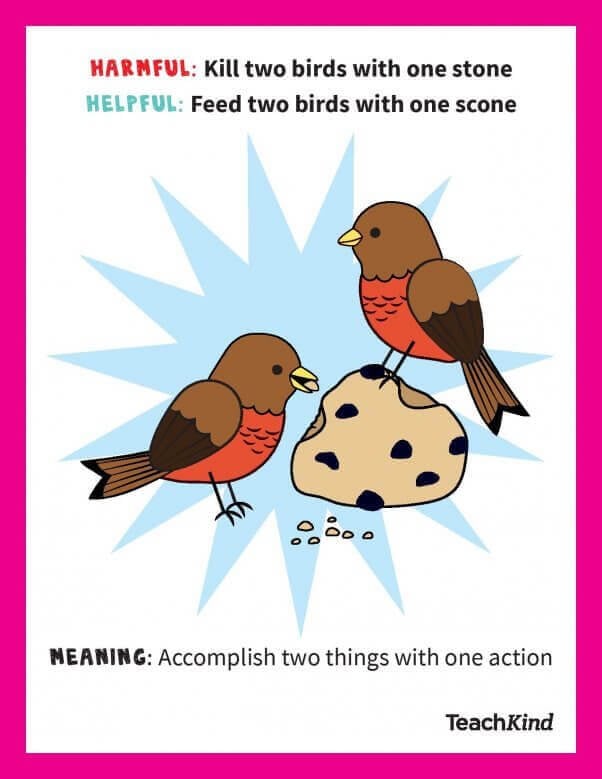
Incorporate Rescue Stories Into Your Lessons
Stories of people helping animals are all over the internet, and sharing them is an excellent way to begin or end many lessons. Rescue videos reveal the stark realities that many animals face every day, and their happy endings empower students to take action, making them ideal for learners of all ages and abilities. You can show a quick clip at the beginning of class to get students thinking, try one of our rescue story Kahoot! games, or wrap up the day with a heartwarming video to leave them feeling inspired. And you can encourage them to share rescue stories they find online or to create their own.
Have Students Read to Animals
Many animal shelters offer programs in which students can visit animals and read to them. This is fun and low-pressure for children and allows the animals to soak up some much-needed love and attention. Reading aloud to animals can also boost students’ literacy skills. If this type of program isn’t available, you can purchase toy animals from a thrift store and let students read to them in class. You can encourage kids to hold the toys while they’re reading and to ask them questions like “What story would you like me to read to you today?” and “Did you like that part of the story?” Although animals can’t respond to us in our language, we can still consider their thoughts and desires. You can even encourage students to read to their animal companions at home, emphasizing the importance of spending high-quality time with companion dogs, cats, and other animals.
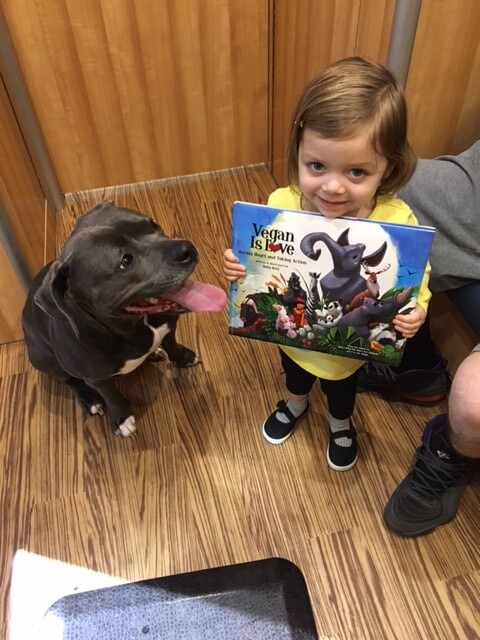
Use ‘Student Spotlight’ to Celebrate Students Who Help Animals
Just as TeachKind highlights the work of various humane educators, giving them a chance to share their stories, you can take time out of your busy school day to make students who demonstrate compassion for animals feel special, too. You can do something small, like recognizing a student for referring to animals using personal pronouns, or you can go all out, presenting students with certificates and showering them with praise for doing things like persuading their families to adopt from an animal shelter. The more you praise your students for helping animals, the more likely they are to do it.

Use Kindness Recognition Tags and Reward Stickers
Introducing kindness recognition tags and reward stickers into your classroom routine can create a positive and encouraging environment. Allowing students to nominate each other for acts of kindness fosters a culture of empathy and mutual respect. These tags and stickers can be awarded for various compassionate actions, such as being mindful not to disturb wildlife during recess, treating animals with respect, helping a classmate with their work, sharing supplies, or simply offering a kind word. This practice not only motivates students to be more considerate but also helps them recognize and appreciate kindness in others. Celebrating these moments with tangible rewards reinforces positive behavior and builds a supportive classroom community.
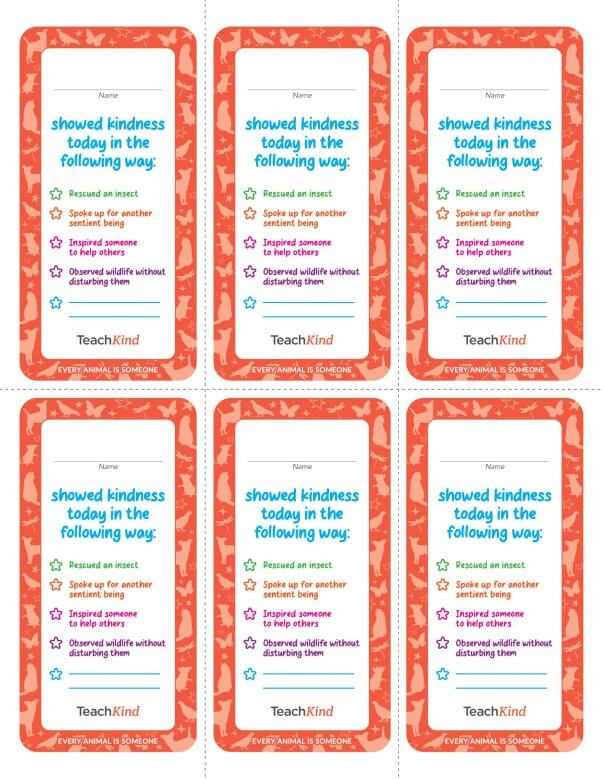
CLASSROOM JOBS
Insect Rescuer
Teaching students how to rescue insects and then assigning a student the role of insect rescuer can be a fun and educational way to foster empathy for even the smallest individuals. The insect rescuer is responsible for safely relocating any insects found in the classroom to a more suitable outdoor environment. This job helps students understand the importance of all living beings and promotes having a gentle and respectful attitude toward insects.
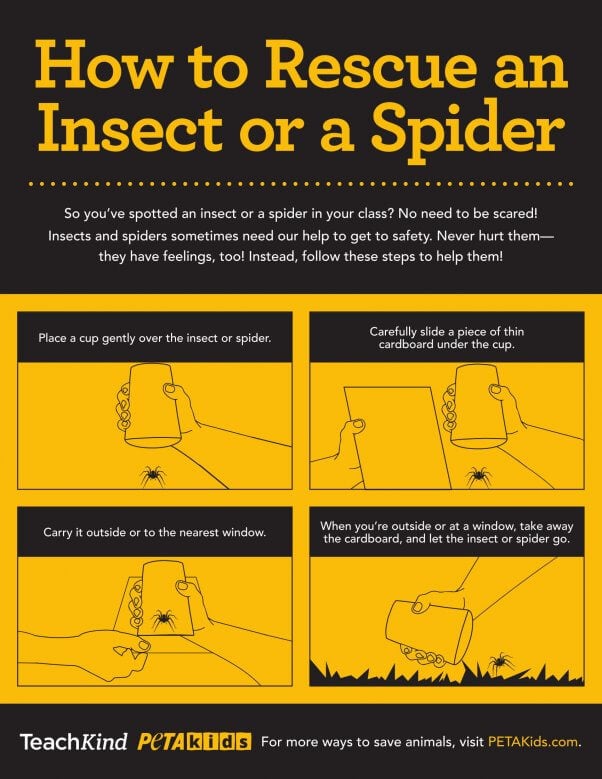
Recycling and Litter Collection Chief
The recycling and litter collection chief has a crucial role in the classroom: This person is responsible for managing the recycling of cans and other materials. The job includes tasks like crushing cans with the help of an adult and ensuring that trash and recyclables are properly sorted and disposed of. By emphasizing the connection between recycling and protecting animals, you’ll help students learn how their actions can help the environment and wildlife.
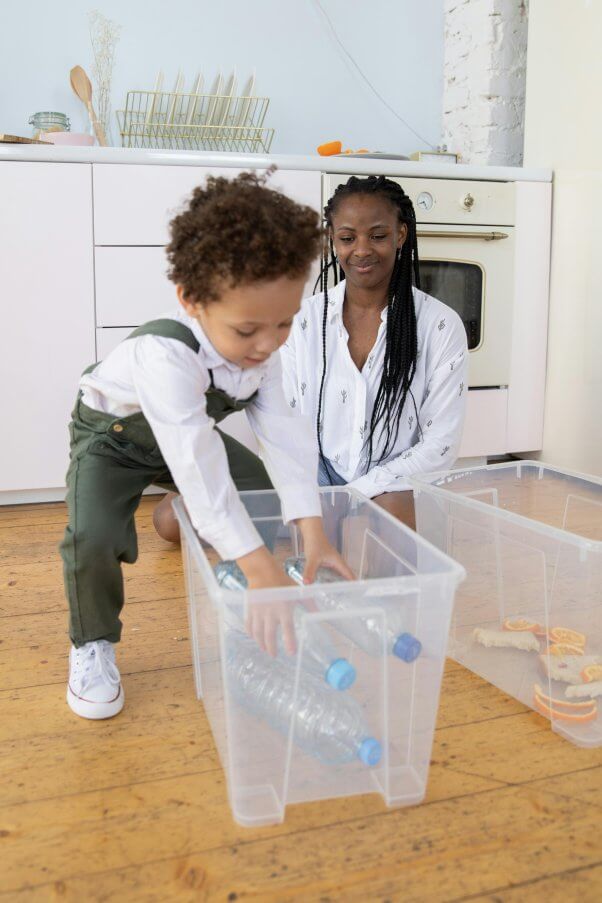
Caretakers of a Class Plant Instead of a Class ‘Pet’
Animals, including hamsters, small reptiles, and fish, don’t belong in the classroom for a number of reasons. Instead, choose a hypoallergenic plant—or several—for students to take care of. You can assign specific tasks—like watering, dusting, and trimming the plant—to different students throughout the school year or to individual students for a week at a time. You can even name your class plant! Students will practice responsibility, enjoy watching the plant grow, learn about plant anatomy, and breathe fresh, clean air—all without harming animals.
*****
Need more tips? Fill out the form below to sign up for TeachKind e-mails.
By submitting this form, you’re acknowledging that you have read and agree to our privacy policy and agree to receive e-mails from us.





